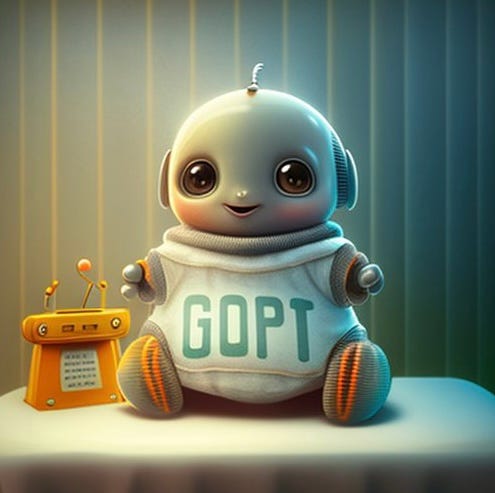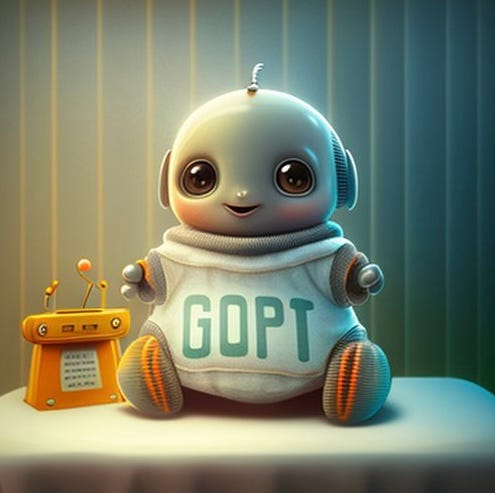
For years we have been hearing, endlessly, about how GPT-5 was going to land imminently, and those predictions turned out to be wrong so often that a year ago I wrote a post about it, called GPT-5…now arriving Gate 8, Gate 9, Gate 10, not to mention a couple of April Fool’s jokes. But this time I think GPT-5 really is about to drop, no foolin’.
GPT-5 will surely be better, a lot better than GPT-4. I guarantee that minds will be blown. When it comes out, it will totally eclipse GPT-4. Nonetheless, I have 7 darker predictions.
GPT-5 will still, like its predecessors, be a bull in a china shop, reckless and hard to control. It will still make a significant number of shake-your-head stupid errors, in ways that are hard to fully predict. It will often do what you want, sometimes not—and it will remain difficult to anticipate which in advance..
Reasoning about physical, psychological and mathematical world will still be unreliable, GPT-5 will solve many of the individual specific items used in prior benchmarks, but still get tripped up, particularly in longer and more complex scenarios.
Fluent hallucinations will still be common, and easily induced, continuing—and in in fact escalating— the risk of large language models being used as a tool for creating plausible-sounding yet false misinformation. Guardrails (a la ChatGPT) may be in place, but the guardrails will teeter between being too weak (beaten by “jailbreaks”) and too strong (rejecting some perfectly reasonable requests).
Its natural language output still won’t be something that one can reliably hook up to downstream programs; it won’t be something, for example, that you can simply and directly hook up to a database or virtual assistant, with predictable results. GPT-5 will not have reliable models of the things that it talks about that are accessible to external programmers in a way that reliably feeds downstream processes. People building things like virtual assistants and agents will find that they cannot reliably enough map user language onto user intentions.
GPT-5 by itself won’t be a general purpose artificial general intelligence capable of taking on arbitrary tasks. Without external aids it won’t be able beat Meta’s Cicero in Diplomacy; it won’t be able to drive a car reliably; it won’t be able to reliably guide a robot like Optimus to be anything like as versatile as Rosie the Robot. It will remain turbocharged pastiche generator, and a fine tool for brainstorming, and for first drafts, but not trustworthy general intelligence.
“Alignment” between what humans want and what machines do will continue to be a critical, unsolved problem. The system will still not be able to restrict its output to reliably following a shared set of human values around helpfulness, harmlessness, and truthfulness. Examples of concealed bias will be discovered within days or months. Some of its advice will be head-scratchingly bad.
When AGI (artificial intelligence) comes, large language models like GPT-5 may be seen in hindsight as part of the eventual solution, but only as part of the solution. “Scaling” alone—building bigger and models until they absorb the entire internet — will prove useful, but only to a point. Trustworthy, general artificial intelligence, aligned with human values, will come, when it does, from systems that are more structured, with more built-in knowledge, and will incorporate at least some degree of explicit tools for reasoning and planning, as well as explicit knowledge, that are lacking in systems like GPT. Within a decade, maybe much less, the focus of AI will move from a pure focus on scaling large language models to a focus on integrating them with a wide range of other techniques. In retrospectives written in 2043, intellectual historians will conclude that there was an initial overemphasis on large language models, and a gradual but critical shift of the pendulum back to more structured systems with deeper comprehension.
If all seven predictions prove correct, I hope that the field will finally realize that it is time to move on.
Shiny things are always fun to play with, and I fully expect GPT-5 to be the shiniest so far, but that doesn’t mean that it is a critical step on the optimal path to AI that we can trust. For that, we will, I predict, need genuinely new architectures that incorporate explicit knowledge and world models at their very core.
§
Oh, one more thing. I am not usually in the habit of self-plagiarism, but in the interest of full disclosure, this essay was different. Virtually every word, except the first paragraph and this last section, was deliberately taken from an earlier essay that I posted on Christmas Day 2022, called What to expect when you are expecting … GPT-4. I searched-and-replaced GPT-4 with GPT-5, trimmed a few lines, and here we are.
I was right on the money then. Let’s see how much has changed.
Gary Marcus (@garymarcus) is a scientist, best-selling author, and entrepreneur. His most recent book is Taming Silicon Valley.

